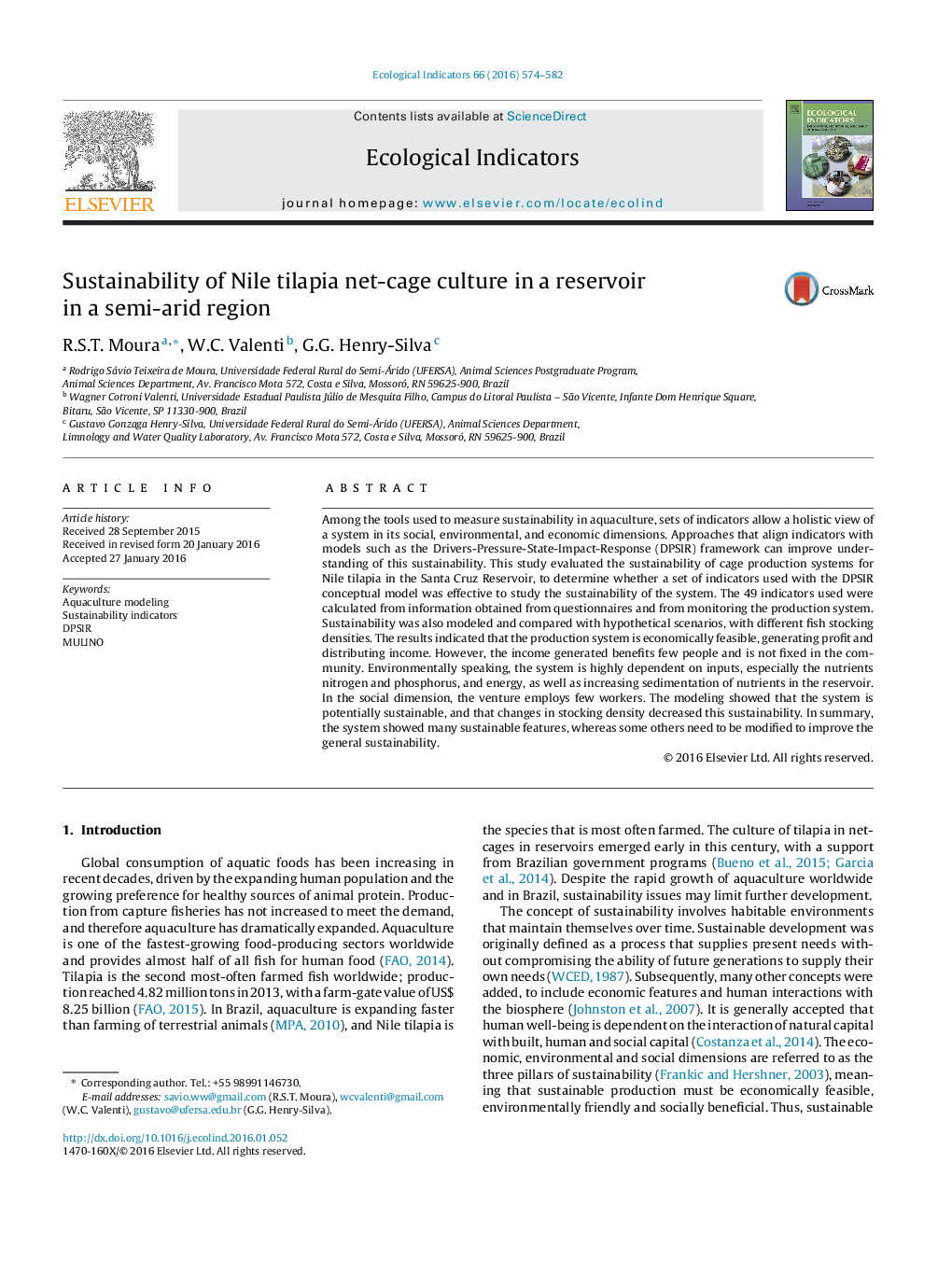| کد مقاله | کد نشریه | سال انتشار | مقاله انگلیسی | نسخه تمام متن |
|---|---|---|---|---|
| 6293546 | 1617136 | 2016 | 9 صفحه PDF | دانلود رایگان |
عنوان انگلیسی مقاله ISI
Sustainability of Nile tilapia net-cage culture in a reservoir in a semi-arid region
ترجمه فارسی عنوان
پایداری فرهنگ نیل سلطنتی تیلاپیا در مخزن در یک منطقه نیمه خشک
دانلود مقاله + سفارش ترجمه
دانلود مقاله ISI انگلیسی
رایگان برای ایرانیان
موضوعات مرتبط
علوم زیستی و بیوفناوری
علوم کشاورزی و بیولوژیک
بوم شناسی، تکامل، رفتار و سامانه شناسی
چکیده انگلیسی
Among the tools used to measure sustainability in aquaculture, sets of indicators allow a holistic view of a system in its social, environmental, and economic dimensions. Approaches that align indicators with models such as the Drivers-Pressure-State-Impact-Response (DPSIR) framework can improve understanding of this sustainability. This study evaluated the sustainability of cage production systems for Nile tilapia in the Santa Cruz Reservoir, to determine whether a set of indicators used with the DPSIR conceptual model was effective to study the sustainability of the system. The 49 indicators used were calculated from information obtained from questionnaires and from monitoring the production system. Sustainability was also modeled and compared with hypothetical scenarios, with different fish stocking densities. The results indicated that the production system is economically feasible, generating profit and distributing income. However, the income generated benefits few people and is not fixed in the community. Environmentally speaking, the system is highly dependent on inputs, especially the nutrients nitrogen and phosphorus, and energy, as well as increasing sedimentation of nutrients in the reservoir. In the social dimension, the venture employs few workers. The modeling showed that the system is potentially sustainable, and that changes in stocking density decreased this sustainability. In summary, the system showed many sustainable features, whereas some others need to be modified to improve the general sustainability.
ناشر
Database: Elsevier - ScienceDirect (ساینس دایرکت)
Journal: Ecological Indicators - Volume 66, July 2016, Pages 574-582
Journal: Ecological Indicators - Volume 66, July 2016, Pages 574-582
نویسندگان
R.S.T. Moura, W.C. Valenti, G.G. Henry-Silva,
